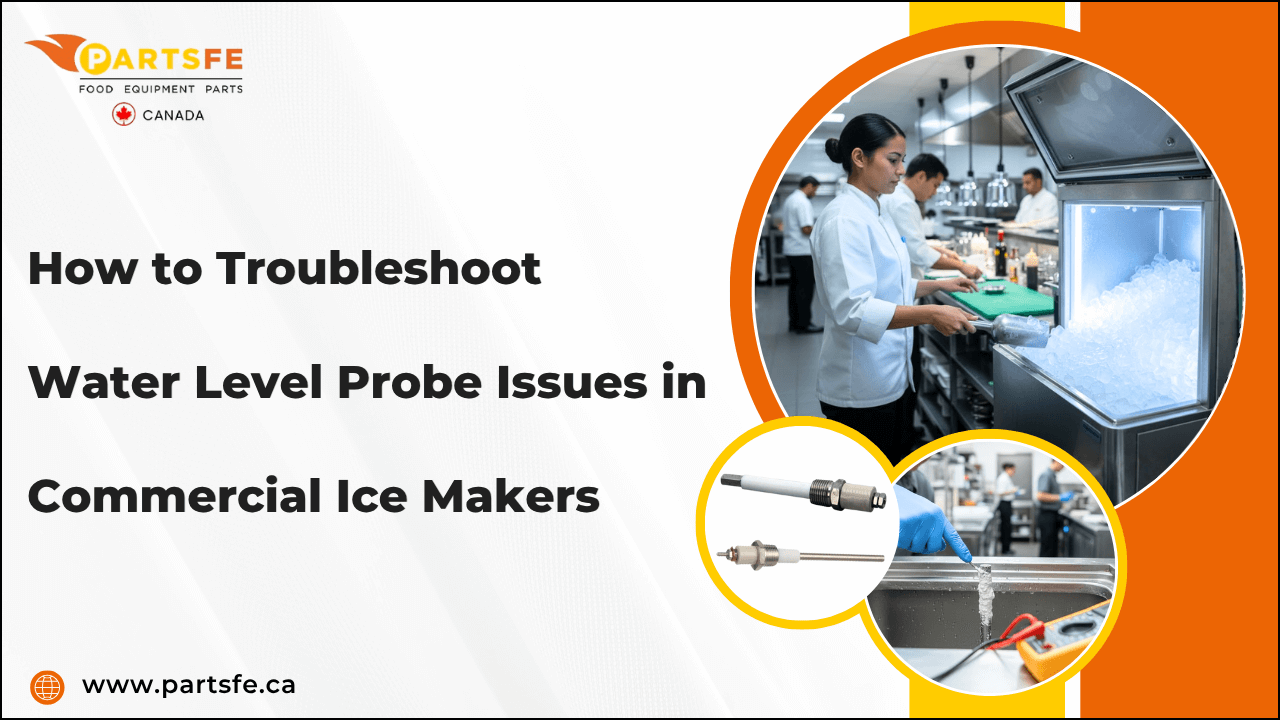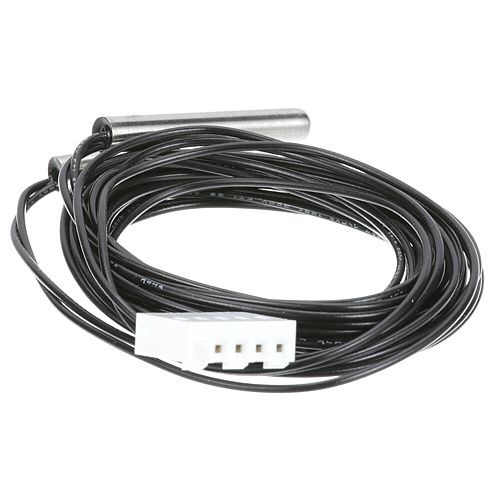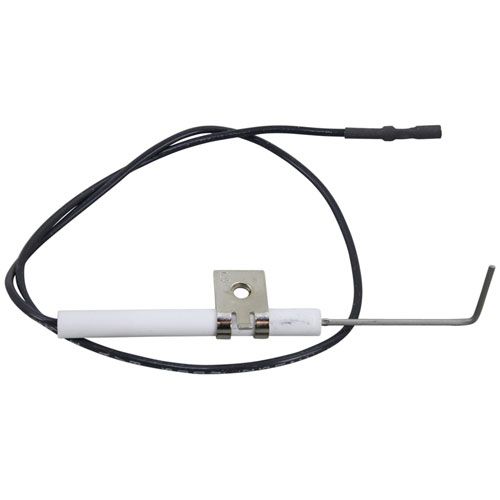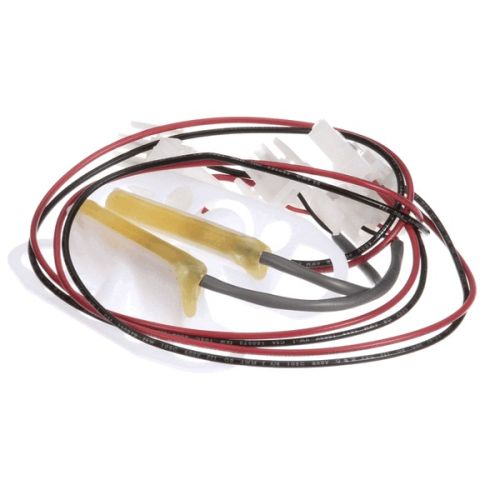How to Troubleshoot Water Level Probe Issues in Commercial Ice Makers
Commercial ice makers depend on accurate water level monitoring to produce ice efficiently and avoid damage. The water level probe plays a critical role by sensing the water in the reservoir. If the probe malfunctions, it can cause overfilling, underfilling, or complete stoppages, disrupting operations and increasing costs. Recognizing and resolving probe issues is essential for consistent ice production and equipment longevity.
Troubleshooting water level probe problems involves inspection, cleaning, and electrical testing. Common issues include mineral buildup, worn components, or faulty wiring. By following systematic steps, technicians can quickly restore proper operation, minimize downtime, and maintain reliable ice production. Regular maintenance and early detection are crucial for preventing costly repairs and ensuring optimal performance.
What the Water Level Probe Does in a Commercial Ice Maker
The ice machine water level probe is a critical sensor in commercial ice makers, responsible for maintaining the proper water level in the reservoir. Beyond standard monitoring, it plays several lesser-known roles that ensure efficiency, longevity, and reliability.
-
Monitors Water Levels: Continuously checks reservoir levels to ensure consistent ice production.
-
Prevents Overfilling and Underfilling: Stops water flow when full and signals for refill when low.
-
Protects Components: Prevents damage to pumps, freezing mechanisms, and sensors.
-
Maintains Production Efficiency: Ensures uninterrupted ice production cycles.
-
Supports Safety: Reduces risk of electrical or mechanical malfunctions from improper water levels.
-
Integrates with Controls: Communicates with the ice maker’s electronic system to automate filling cycles.
-
Reduces Mineral Buildup Issues: Some advanced probes detect scale accumulation, triggering maintenance alerts before performance drops.
-
Optimizes Energy Usage: Proper water levels reduce unnecessary pump operation, lowering energy consumption.
-
Prevents Ice Quality Problems: Consistent water levels help maintain clear, uniform ice cubes instead of cloudy or uneven pieces.
-
Detects Leaks or Malfunctions: Sudden drops or inconsistent readings can alert technicians to internal leaks or sensor faults early.
These functions show that the water level probe does far more than just measure water; it actively protects, optimizes, and prolongs the life of a commercial ice maker.
Looking for replacement parts to keep your ice machine’s water level probe working perfectly? PartsFe CA offers essential components like ice probes & sensors, ice maker water valves, and ice machine water filters from top brands like Manitowoc, Hoshizaki, and Scotsman. Ensure accurate sensing, consistent ice production, and long-lasting performance with PartsFe CA.
Common Water Level Probe Issues in Commercial Ice Machines and Their Causes
The water level probe in commercial ice makers can cause operational problems if it becomes dirty, damaged, or misaligned. These issues are frequently reported by technicians and users online.
Overfilling / Constant Water Flow
The machine keeps filling with water even when the reservoir is full.
Signs: Water overflows or the machine never stops filling.
Causes: Mineral buildup, dirt on the probe, or a shorted sensor.
Fix: Clean the probe thoroughly with a vinegar solution or mild descaler, and check wiring for shorts to restore proper sensing.
False “No Water” Errors
The machine displays “no water” warnings despite sufficient water.
Signs: Ice production stops unexpectedly; water level looks normal.
Causes: Mineral deposits or biofilm insulating the probe.
Fix: Remove and clean the probe, ensuring all buildup is cleared; replace the probe if cleaning doesn’t resolve the issue.
Probe Short / Sensor Malfunction
The probe stops working due to a short circuit.
Signs: The machine either overfills or fails to fill; error codes may appear.
Causes: Debris in hard water systems or damaged wiring.
Fix: Inspect wiring for damage, clean the probe, and replace if electrical faults persist.
Machine Enters Safe Mode After Harvest
The ice maker stops working after ice harvest.
Signs: The machine stops producing ice and shows low water warnings.
Causes: Probe keeps reading water present even when empty.
Fix: Clean the probe and check alignment; ensure the reservoir is empty before restarting.
Intermittent Water Loss During Ice Production
Water level drops inconsistently during production.
Signs: Ice batches are smaller or uneven; air bubbles in the water trough.
Causes: Probe isn’t consistently sensing water due to debris or loose connections.
Fix: Secure probe connections and clean the sensor to maintain consistent readings.
Tilt / Leveling Issues Causing Errors
The machine misreads water levels due to improper leveling.
Signs: False “add water” or “no water” alerts appear.
Causes: The ice maker is not perfectly level; the probe misreads the water depth.
Fix: Level the machine and ensure the probe is properly mounted for accurate readings.
Wiring or Connection Faults
An open or disconnected probe stops ice maker operation.
Signs: The machine won’t start, or the water flow is uncontrolled.
Causes: Loose, broken, or shortened probe wires.
Fix: Inspect wiring harness and connections; repair or replace damaged cables to restore functionality.
Explore how to troubleshoot common issues with Manitowoc ice machines to ensure efficient operation and consistent ice production.
How to Troubleshoot Water Level Probe Problems in Commercial Ice Machines
Water level probe troubleshooting is essential because subtle environmental, mechanical, and chemical factors can cause failures that standard checks often miss. Recognizing these hidden signs helps prevent recurring issues.
Step 1: Inspect for Biofilm and Microbial Growth
Even visually clean probes can develop a thin biofilm that insulates the sensor. Use a soft brush and mild sanitizer to remove microbial layers that affect conductivity.
Step 2: Check for Air Pocket Formation
Small air pockets around the probe can mimic low water levels. Tilt the machine slightly and watch if water adheres to the probe correctly during a test fill.
Step 3: Examine Water Flow Speed Near Probe
Fast or turbulent water can trigger false high readings. Adjust inlet valves to reduce turbulence and allow the probe to sense water more accurately.
Step 4: Test for Mineral Coating Below the Surface
Some scales form beneath the visible waterline and evade surface cleaning. Use a soft scraper or chemical descaler for deeper probe cleaning.
Step 5: Observe Temperature-Dependent Response
Extremely cold water slows probe conductivity. Test with slightly warmer water to see if delayed readings are due to temperature rather than mechanical failure.
Step 6: Check for Vibration Sensitivity
Machines near compressors or high-traffic areas may vibrate. Loosened brackets or shaky probes can register false readings; secure all mounting points.
Step 7: Monitor Seasonal Water Chemistry
Hardness and mineral content can vary with seasonal water supply changes. Compare readings during different months to detect environmental influence on probe performance.
Step 8: Look for Hidden Leaks or Reservoir Evaporation
Slow leaks or evaporation can cause intermittent “low water” errors. Inspect tubing, joints, and reservoir seals carefully for micro-leaks.
Step 9: Evaluate Probe Conductivity Drift Over Time
Even functional probes can gradually lose sensitivity. Log readings over weeks to catch a gradual drift before full failure occurs.
Step 10: Perform Final Test and Monitor Long-Term Performance
Run several ice cycles to confirm the probe consistently detects water. Tracking performance over time helps identify subtle or recurring issues before they escalate.
Check out how to reset a Scotsman ice machine to quickly resolve common errors and restore normal operation.
How Water Quality and Mineral Buildup Affect Water Level Probes
Water quality has a direct impact on the performance of commercial ice machines. Mineral buildup and chemical imbalances can lead to inaccurate readings and operational issues, so it’s important to know how to check water level probe for proper functionality.
-
Hard Water and Scale Formation: High levels of calcium and magnesium in water can create mineral deposits on probes, causing inaccurate water level readings. This may result in overfilling or insufficient ice production.
-
Microscopic Mineral Layers: Even small, invisible particles can coat the probe, reducing electrical conductivity and interfering with sensor performance. Over time, this subtle buildup can lead to intermittent machine issues.
-
Chemical Corrosion: Chlorine and other water treatment chemicals can slowly corrode metal probes, decreasing sensitivity and lifespan.
-
Impact of Water Temperature: Warm water accelerates mineral deposition, especially during heavy ice production, increasing the risk of probe malfunction.
-
Hidden Maintenance Challenge: Many technicians overlook these small deposits because they don’t immediately affect machine operation, leading to chronic inefficiencies over time.
-
Filtration Benefits: Installing water filters or softeners reduces scale buildup, protects the probe, and ensures consistent water level readings.
-
Improved Ice Quality: Cleaner water not only extends probe life but also produces clearer, better-tasting ice, indirectly enhancing customer satisfaction.
-
Preventive Cleaning: Regularly using non-abrasive descaling solutions and checking water chemistry can prevent long-term damage and reduce downtime.
Maintenance Tips to Prevent Future Water Level Probe Failures in a Commercial Ice Maker
Preventing water level probe failures starts with a proactive maintenance routine tailored to commercial ice machines. Consistent attention not only improves ice production but also extends the life of critical components.
-
Scheduled Probe Cleaning: Clean probes weekly or monthly with non-abrasive descaling solutions, even if no visible buildup is present. This prevents mineral films that interfere with sensor accuracy.
-
Water Softening and Filtration: Installing a water softener or filtration system reduces calcium and magnesium deposits, minimizing scaling and corrosion.
-
Regular Electrical Inspections: Check wiring, connectors, and terminals for corrosion, loose connections, or frayed wires. Electrical issues often mimic probe failure and compromise performance.
-
Monitor Water Chemistry: Test pH, hardness, and chlorine levels periodically. Maintaining balanced water prevents both scale and chemical corrosion.
-
Temperature Control: Avoid consistently high water temperatures, which accelerate mineral buildup. Consider pre-cooling incoming water if necessary.
-
Protective Coatings and Anodes: Where compatible, use approved anti-corrosion coatings or sacrificial anodes on probes to slow oxidation without affecting conductivity.
-
Routine Functional Testing: Use a multimeter or probe tester to verify accurate readings quarterly, identifying early signs of wear or drift.
-
Maintenance Logs: Document all cleaning, inspections, and tests to track patterns and predict maintenance needs before failures occur.
Following these targeted steps ensures reliable probe performance, reduces downtime, and maximizes the longevity of your commercial ice machine.
Safeguard Your Ice Machine: Ensure Consistent Ice Production and Avoid Unexpected Repairs
Maintaining optimal performance of your commercial ice machine goes beyond simple cleaning. By understanding water level probe functionality, monitoring water quality, and performing regular water probe testing, operators can prevent costly downtime and keep ice production consistent. Proactive attention ensures both equipment longevity and high-quality ice output.
Key Takeaways:
-
Regular Probe Inspections: Check for mineral buildup, corrosion, or debris to ensure accurate water level detection.
-
Test Probe Conductivity: Periodically measure the probe’s electrical response to catch early sensitivity loss.
-
Watch for False Readings: Overfilling or “no water” errors often indicate probe misalignment, dirt, or electrical issues.
-
Consider Water Quality: Hard water, chlorine, and temperature fluctuations can damage probes and affect accuracy.
-
Check Installation and Leveling: A tilted machine or loose probe bracket can cause intermittent or incorrect readings.
-
Protect Against Environmental Factors: Vibration, air pockets, and temperature swings can trigger false signals; ensure stable operating conditions.
-
Document Probe Performance: Keep logs of probe checks, cleaning, and any anomalies to track recurring issues and maintenance needs.
-
Replace When Necessary: Even well-maintained probes have a lifespan; replace if repeated cleaning or adjustments fail to restore accuracy.
Proactive monitoring and early troubleshooting of water level probes protect your ice machine from unexpected failures. Consistent attention to water quality, probe function, and environmental factors ensures reliable ice production. Implementing these strategies minimizes downtime, reduces repair costs, and maximizes the lifespan of your commercial ice maker.
FAQs
Why is my commercial ice machine not sensing water?
The water level probe may be dirty, misaligned, or damaged. Ensure the probe is clean and properly installed to restore proper sensing.
What causes a water level probe not to detect water?
Mineral buildup, corrosion, or loose wiring can prevent detection. Temperature changes and air pockets around the probe can also interfere with readings.
How do I clean a water level probe on an ice maker?
Use a soft cloth or brush with a mild descaler or vinegar solution. Avoid abrasive tools to prevent damaging the probe surface.
Does low water quality affect the probe?
Yes, hard water and chemicals like chlorine can cause scale and corrosion. This reduces probe sensitivity and can trigger false readings.
When should I replace a water level sensor?
Replace it if cleaning and adjustments don’t fix errors or if the probe shows corrosion or electrical faults. Regular monitoring helps detect when replacement is needed.











